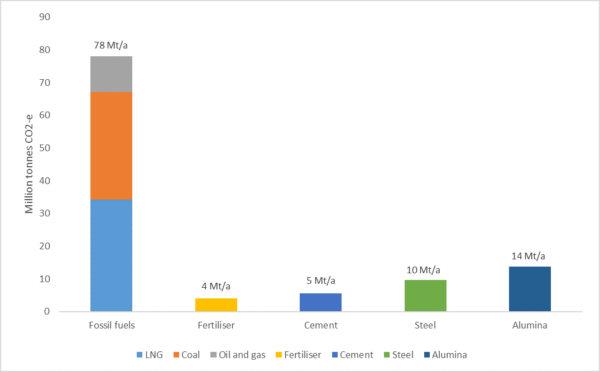Minister Chris Bowen was today asked in Question Time by the Member for Kooyong why the Safeguard Mechanism allows unlimited access to carbon offsets, undermining any incentive for emissions cuts.
The Minister’s response was “I do not accept the premise of the member’s questions. It is the case that the Government is allowing access to offsets. I would invite the honorable member, and I say with all due respect, if people are going to ask for a cap on the use of credits they need to explain how hard to abate sectors will achieve the targets? How will cement achieve its targets with the technology that is currently emerging and is not yet available without access to ACCUs [Carbon Credits]?”
New analysis shows that cement and steel make up just 4% and 8% of emissions from Safeguard Mechanism facilities. These emissions are dwarfed by pollution from coal, oil and gas projects.
Experts have queried if the real purpose of unlimited offsets is to allow for new gas and coal projects to proceed.
Key Points:
- Cement production contributes just 4% of emissions from Safeguard Mechanism facilities
- Steel production contributes just 8% of emissions from Safeguard Mechanism facilities
- Cement is virtually irrelevant to meeting Australia’s emissions commitments
- According to a recent Reputex report, fossil fuel projects will make up at least 82% of emissions from new projects by 2030
- Fossil fuel projects make up over half the emissions from existing SGM facilities today
- Unlimited carbon offsets may enable new fossil fuel production projects to proceed because they would be unable to meet their Safeguard Mechanism obligations without them
Figure 1: Emissions from selected sectors under the Safeguard Mechanism

“Manufacturing industries like cement and steel are being used as a smokescreen to conceal the Australian Government’s support for gas and coal expansion,” said Dr. Richard Denniss, Executive Director of leading public policy think tank the Australia Institute.
“The Government talks frequently about needing offsets for cement and steel. However, these sectors contribute a fraction of emissions covered by the Safeguard Mechanism. Emissions from gas and coal are enormous and increasing. Which raises the question of who the government is really trying to ensure has access to unlimited offsets.
“Australia has 116 new gas and coal projects in the pipeline, which would contribute 4.8b tonnes of pollution by 2030. Offsets are critical to giving these projects the social and regulatory license they need to go ahead.
“Offsets are not an excuse for business as usual. They are certainly not a license for fossil fuel expansion. Yet that is how they are being used under the Safeguard Mechanism.”
Minister Bowen has previously made similar remarks:
“What we are doing is undertaking a large and complicated reform process that covers a lot of different industries, 215 different facilities, 84 of which are fossil fuel facilities, but many are different types of facilities with varying degrees of capability at the moment to reduce their emissions on site.
Take cement for example. Its complicated and difficult to reduce emissions on site without reducing production or reducing staff, so we don’t want to that to happen, so we do need to provide some flexibility.” Minister Chris Bowen RN Breakfast Tuesday March 7, 2023






